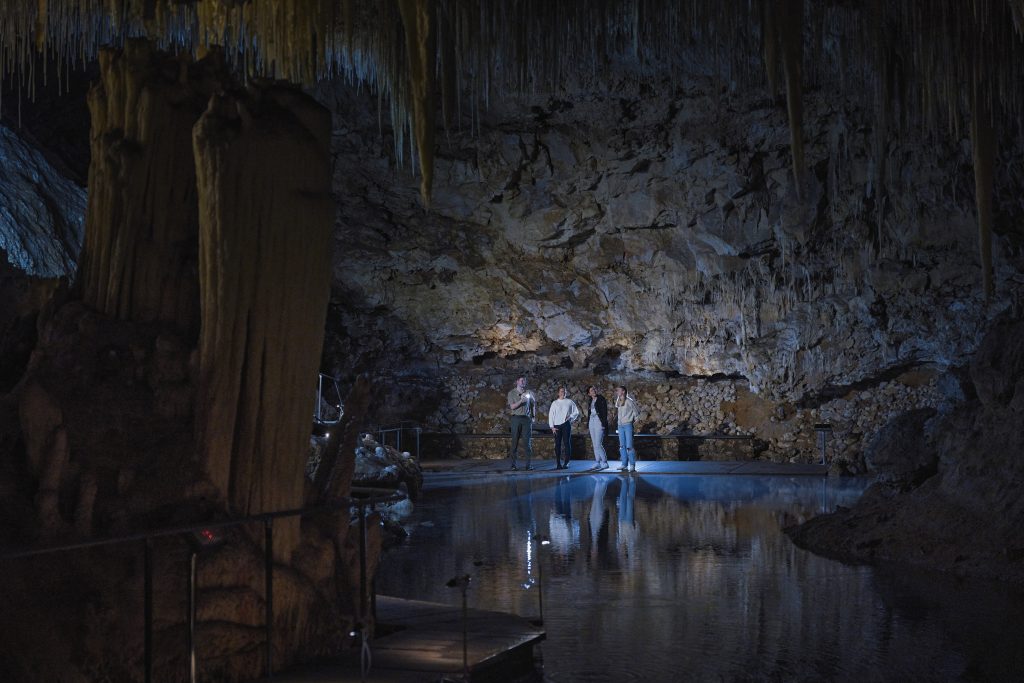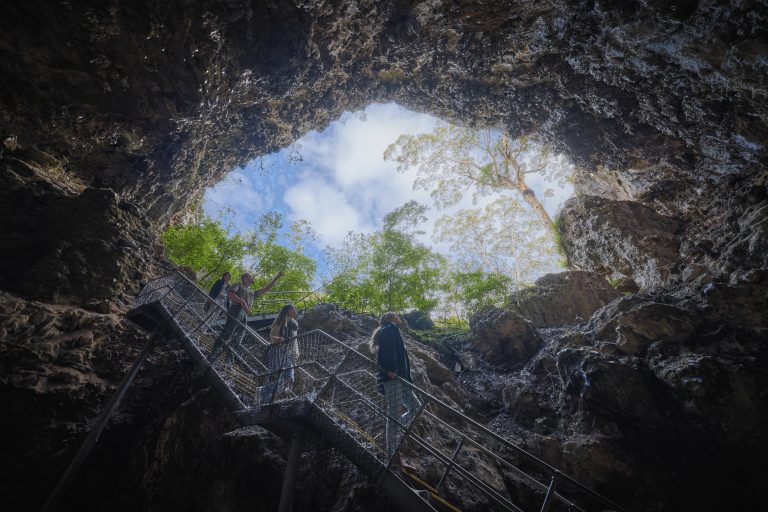South West’s deepest hidden wonder
Lake Cave plunges 62 metres into the earth, revealing a stunning 82-metre-long chamber shaped by ancient collapse and time.
The doline itself was once an expansive underground cavern, but a collapse left behind the deep hollow we see today, with a sloping floor that leads to a small entrance into the cave.
Over the years, Lake Cave has experienced its share of dramatic flooding. In 1924, after bushfires ravaged the surrounding land, torrential rain caused the doline to flood, with water pouring in from the surrounding landscape.
The extreme saturation led to a rock and soil subsidence that blocked the stream passage. It took seven to eight months of work to dig a tunnel and release the floodwater.
A similar flood occurred in 1941, but thanks to the earlier improvements, the water cleared in just a few days.








